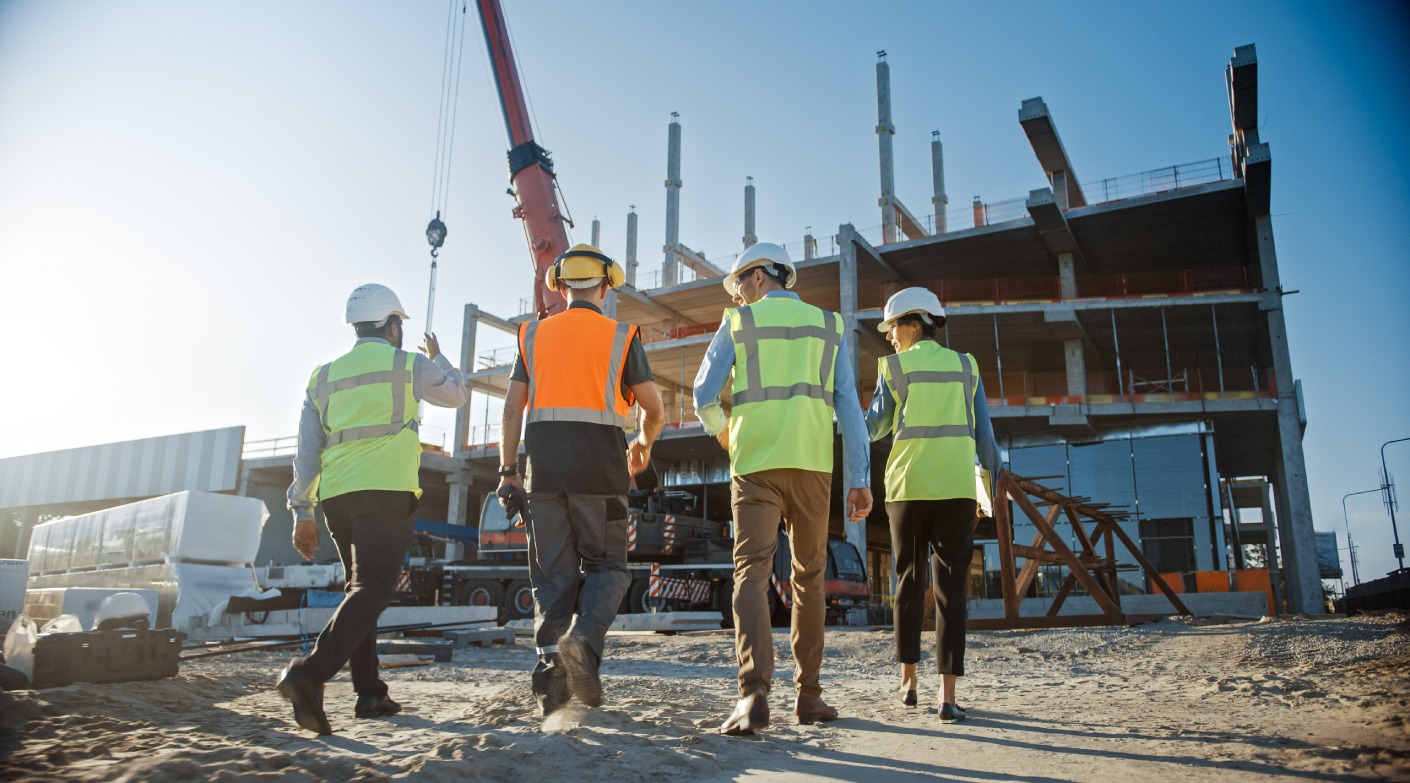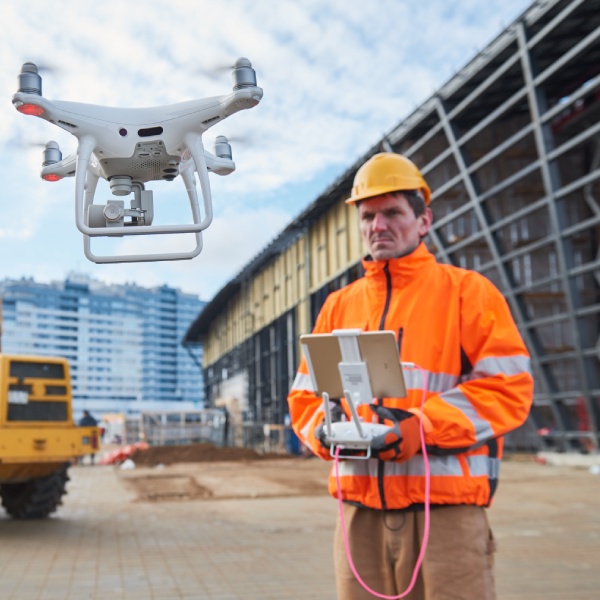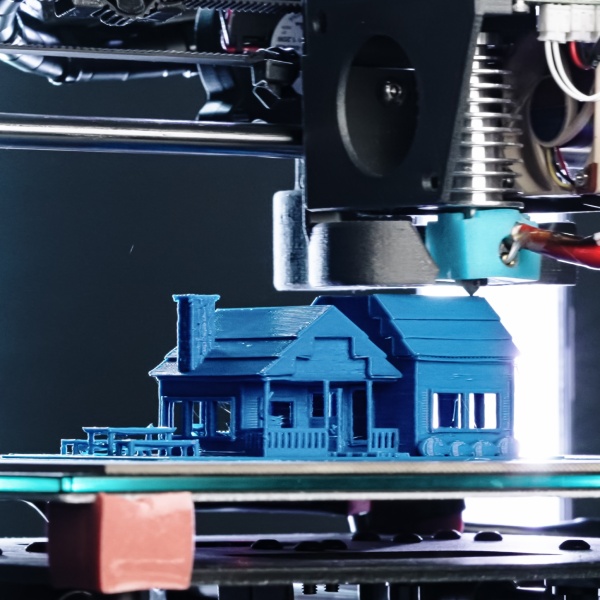
The commercial construction industry has experienced remarkable changes over the past few years, and 2024 promises even more rapid transformation. As we move forward, digital technologies are playing a crucial role in optimizing construction and design processes, reducing the environmental impact of commercial buildings, and adapting to a changing landscape.

In this article, we’ll explore the key commercial construction trends that have already made a significant impact and are poised to shape the remainder of 2024. Read on to learn more about them in detail.
1. Green Buildings and Focus on Sustainability
The construction industry is likely to continue its focus on sustainable development and eco-friendly methods, prioritizing the use of green and sustainable raw materials. Non-toxic raw materials such as reclaimed wood, recycled metal, and bamboo can limit adverse impacts on both the environment and building occupants. This approach also helps reduce the carbon footprint of construction projects.
Additionally, sustainable construction practices offer numerous benefits, including water conservation, improved health and safety for occupants, and a reduction in greenhouse gas emissions. Embracing these practices not only supports environmental stewardship but also promotes a healthier, more sustainable future for everyone.
2. Dealing with Labor Shortages
The labor shortage is a significant challenge across many industries, including commercial construction. In 2022, there were nearly 390,000 unfilled positions in the construction sector, directly impacting project completion timelines and the quality of buildings.
This shortage is particularly acute in commercial construction. Firms are employing various strategies, such as offering higher salaries and reaching out to students early on to spark their interest in the field. Despite these efforts, it remains to be seen how effective they will be in alleviating the labor shortage in the long term.
3. The Benefit of Drone Technology
 It is amazing to see the pace at which the construction industry is adopting drone technology. Drones are making a real difference by giving construction teams immediate insights into their sites. This means workers can now inspect areas from a safe distance, avoiding potentially risky situations.
It is amazing to see the pace at which the construction industry is adopting drone technology. Drones are making a real difference by giving construction teams immediate insights into their sites. This means workers can now inspect areas from a safe distance, avoiding potentially risky situations.
Beyond safety, drones are also helping to save costs by accurately measuring stockpiles and managing debris in real-time, making the whole process more efficient and less wasteful.
4. Technology to Improve Worker Safety
The construction industry is known for its inherent hazards, which unfortunately lead to both fatal and nonfatal injuries among workers. Addressing these safety challenges requires proactive measures, and technology is stepping up to the task.
Today, we’re seeing some exciting advancements that prioritize worker safety more holistically. Take, for instance, the latest hard helmets. They’re not just about protecting the head anymore—they’re designed to safeguard the neck and spinal cord, too, especially crucial in high-risk fall scenarios.
Moreover, health monitoring devices are helping to ensure workers are fit for duty each day, offering peace of mind and proactive care. And when it comes to working at heights, improved suspension systems are making a significant difference, reducing the risks involved.
These innovations are a clear sign of how technology is making construction sites safer places to work, allowing everyone to focus more on their tasks with confidence and security.
5. Rising Construction Material Costs
The impact of material shortages in the construction industry is significant. As commercial construction projects increase, the scarcity of construction materials is driving up prices across the board. From essential items like construction appliances to materials such as plywood, clay bricks, ceramic tiles, copper wires, windows, doors, and plumbing fittings—the entire spectrum is affected.
In 2021 alone, demand for construction materials rose by 7.7%, exacerbating the pricing surge. This situation is posing challenges for construction firms, as higher material costs are squeezing profitability and requiring greater investment per project. Balancing these costs while maintaining project viability is becoming increasingly complex in the current market conditions.
6. Smart Cities Leading the Way

Smart cities are really catching on as a game-changer in today’s construction scene. Big names like Microsoft, Cisco, and IBM are diving in headfirst, and Toyota’s plan for a smart city near Tokyo is just the latest buzz.
These cities aren’t just about building bigger or taller; they’re about using IoT (Internet of Things) to make urban life smarter and more connected. Picture eco-friendly neighborhoods where everything from energy use to transportation is optimized using data. It’s all aimed at making life better—improving how we live, work, and interact with our surroundings.
Experts say the idea of smart cities is growing fast and will touch $676 billion by 2028. That’s a sign of how much potential there is to transform our cities for the better with these innovative approaches.
7. Prefabrication and Modular Construction
Prefabrication and modular construction are really stepping up to tackle some of the toughest challenges in the construction industry today. They’re not just trends; they’re solutions to environmental concerns, labor shortages, and the growing issue of construction waste.
Reports are showing that prefabrication is leading to more efficient and higher-quality construction outcomes compared to traditional methods. By assembling components off-site in controlled environments, builders can reduce waste and environmental impact while also overcoming labor shortages. It’s like building with a precision that’s hard to match on-site, resulting in structures that are not only better made but also quicker to put together.
These methods are proving to be more than just a trend—they’re reshaping how we think about construction, making it more sustainable and efficient for the future.
8. Living Building Materials
Living materials are really gaining traction in the construction world, and for good reason—they’re all about being kinder to our planet. These eco-friendly products, like reactive paints, self-healing cement, and self-replicating concrete, are not just futuristic concepts anymore; they’re becoming a reality in today’s projects.
What’s exciting is how these materials promise to shrink the carbon footprint of construction. By using them, custom home builders can cut down on waste and harmful emissions, making the whole process more environmentally friendly. It’s a big step toward greener, more sustainable building practices that we can all feel good about.
9. Increased Popularity of 3D Printing
 3D printing is making waves in the construction industry by revolutionizing how we build structures. Using specialized construction printers, this technology allows us to fabricate buildings layer by layer. The benefits are impressive: it minimizes construction waste, lowers labor requirements, boosts productivity, and speeds up project timelines significantly.
3D printing is making waves in the construction industry by revolutionizing how we build structures. Using specialized construction printers, this technology allows us to fabricate buildings layer by layer. The benefits are impressive: it minimizes construction waste, lowers labor requirements, boosts productivity, and speeds up project timelines significantly.
While 3D printing in construction is still in its early stages, its potential is immense. As more advancements are made and the technology becomes more widely adopted, we can expect it to transform the industry even further. It’s an exciting glimpse into the future of construction, where innovation meets efficiency to build smarter and faster than ever before.
10. Automation and Robotics
In the labor-intensive world of commercial construction, automation and robotics are emerging as game-changers. These technologies offer the potential to optimize workforce capabilities and streamline operations by automating repetitive and time-consuming tasks. By doing so, they not only enhance overall efficiency but also reduce turnaround times significantly.
One of the most compelling aspects of automation and robotics in construction is their ability to improve worker safety. They can take on hazardous tasks that pose risks to human workers, thereby minimizing the chances of accidents and injuries on site. This dual benefit of enhancing efficiency while prioritizing safety underscores why these technologies are gaining traction in the industry. As discussions continue, it’s clear that leveraging automation and robotics has the potential to redefine how we approach construction, making it safer and more efficient than ever before.
11. AR and VR
Virtual designs and Building Information Modeling (BIM) are transforming the construction industry by offering powerful tools for planning and execution. These technologies enable firms to accurately forecast budgets and completion timelines, providing a clearer understanding of project feasibility from the outset.
By simulating structures virtually, builders can identify potential issues early on, minimizing the need for costly and time-consuming rework during actual construction. This proactive approach not only enhances project efficiency but also reduces overall project costs. Essentially, virtual designs and BIM streamline the entire construction process, ensuring smoother workflows and more reliable outcomes.
In essence, embracing these technologies isn’t just about improving efficiency—it’s about laying the groundwork for smarter, more cost-effective construction practices that benefit both builders and clients alike.
12. Connected Construction Sites
Connecting construction sites using IoT is like giving each project its own personal assistant. It ensures that firms managing multiple projects can keep everything in sync effortlessly.
Imagine being able to align workforces, track progress, and monitor every detail from one central hub. IoT processes information seamlessly across sites, ensuring that processes and workflows are smooth and data is accessible in real-time.
This connectivity doesn’t just streamline operations—it promotes resource sharing, enhances safety measures, and improves overall efficiency. By centralizing monitoring and communication, firms can make informed decisions faster, ultimately reducing costs and delivering projects more effectively. It’s like having eyes and ears everywhere, ensuring every project runs like clockwork.
Build Your Home with the Latest Industry Trends in Mind
While these trends highlight significant advancements in the commercial construction industry for 2024, a predominant focus remains on integrating and leveraging technology. The industry’s ability to embrace these emerging technologies efficiently will define its success, efficiency, and growth in the years ahead.
If you’re seeking an RGV home builder to construct your home according to the latest industry standards, reach out to Liongate Builders today.


